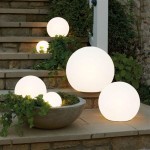Outdoor Wireless Lighting Controls: Enhancing Efficiency and Security
Outdoor lighting plays a crucial role in enhancing safety, security, and aesthetics for both residential and commercial properties. Traditional wired lighting systems, while functional, can be costly to install, maintain, and upgrade. Outdoor wireless lighting controls offer a modern alternative, providing flexibility, energy efficiency, and remote management capabilities. This article explores the benefits, technologies, applications, and considerations related to outdoor wireless lighting control systems.
Wireless lighting control systems operate by using wireless communication protocols to connect lighting fixtures to a central control unit or network. This eliminates the need for extensive wiring, simplifying installation and reducing associated costs. The control system allows users to remotely adjust lighting levels, set schedules, monitor energy consumption, and receive alerts for maintenance issues. The integration of sensors, such as motion detectors and ambient light sensors, further enhances the intelligence and responsiveness of the system.
Key Point 1: The Advantages of Wireless Technology in Outdoor Lighting
The shift from wired to wireless technology in outdoor lighting brings a significant array of advantages. These benefits stem from the inherent flexibility and scalability of wireless communication, making it a highly desirable solution for a wide range of applications.
One of the most notable advantages is the reduced installation cost. Eliminating the need for extensive trenching and wiring significantly lowers labor and material expenses. This is particularly beneficial for retrofitting existing properties, where the cost of rewiring can be prohibitive. Wireless systems can be deployed quickly and efficiently, minimizing disruption to the property and reducing project timelines.
Flexibility and scalability are also key benefits. Wireless systems can be easily expanded or reconfigured as needs change. Adding new fixtures or adjusting lighting zones is a simple process that does not require running new wires. This adaptability makes wireless controls ideal for evolving landscapes and properties undergoing renovations. Moreover, the ability to control individual fixtures or groups of fixtures provides granular control over lighting levels and schedules. This precision allows for optimizing energy consumption and creating custom lighting scenarios for different purposes.
Remote management capabilities are another significant advantage. Wireless lighting control systems allow users to monitor and adjust lighting settings from anywhere with an internet connection. This is particularly useful for managing large properties or multiple locations. Users can access real-time data on energy consumption, identify potential maintenance issues, and make adjustments to optimize performance. Remote management also simplifies troubleshooting and reduces the need for on-site visits, saving time and money.
Enhanced energy efficiency is a primary driver for adopting wireless lighting controls. The ability to dim lights, schedule on/off times, and implement motion-activated lighting significantly reduces energy consumption. Integrating ambient light sensors allows the system to automatically adjust lighting levels based on natural light availability. These features contribute to lower energy bills and a reduced carbon footprint.
Improved safety and security are also achieved through wireless lighting controls. Well-lit outdoor areas deter crime and enhance visibility for pedestrians and vehicles. Motion-activated lighting can alert residents or security personnel to potential intruders. Remote control capabilities allow users to quickly adjust lighting levels in response to changing conditions. Furthermore, the ability to monitor the system remotely provides an added layer of security and peace of mind.
Key Point 2: Wireless Communication Protocols and Technologies
The effectiveness of outdoor wireless lighting controls relies heavily on the underlying communication protocols and technologies used to transmit data between fixtures and the central control unit. Various options exist, each with its own strengths and weaknesses in terms of range, bandwidth, power consumption, and security.
Wi-Fi is a common choice for wireless lighting control due to its widespread availability and relatively high bandwidth. It allows for seamless integration with existing network infrastructure and supports a large number of devices. However, Wi-Fi can be power-intensive, which may be a concern for battery-powered fixtures. The range of Wi-Fi is also limited, requiring the installation of access points to cover large areas.
Zigbee is a low-power, low-bandwidth wireless protocol specifically designed for IoT (Internet of Things) applications, including lighting control. It operates on the IEEE 802.15.4 standard and offers a mesh networking topology, where devices can communicate with each other to extend the range of the network. Zigbee is energy-efficient and suitable for battery-powered fixtures. It also provides robust security features.
Bluetooth Low Energy (BLE) is another low-power wireless protocol that is increasingly used in lighting control. BLE offers a short-range communication capability and is ideal for applications where devices are in close proximity to each other. It is also power-efficient and compatible with smartphones and other mobile devices. BLE Mesh is a variation of Bluetooth that allows for mesh networking, extending the range and reliability of the network.
LoRaWAN (Long Range Wide Area Network) is a long-range, low-power wireless protocol designed for connecting devices over long distances. It is particularly well-suited for outdoor applications where fixtures are spread out over a large area. LoRaWAN uses a star topology, where devices communicate directly with a central gateway. It is energy-efficient and offers good security features.
Cellular technology, such as 4G LTE or 5G, can also be used for outdoor wireless lighting control. Cellular connectivity provides wide-area coverage and high bandwidth, making it suitable for applications where fixtures are located in remote areas or require high data transfer rates. However, cellular connectivity can be more expensive than other wireless protocols due to data charges.
The selection of the appropriate wireless communication protocol depends on several factors, including the range requirements, the number of fixtures, the power consumption constraints, the security needs, and the budget. A thorough assessment of these factors is crucial for ensuring the optimal performance and reliability of the wireless lighting control system.
Key Point 3: Applications and Considerations for Implementation
Outdoor wireless lighting controls find applications across a wide range of settings, from residential landscapes to commercial properties and public spaces. Understanding the specific needs and challenges of each application is essential for successful implementation.
In residential settings, wireless lighting controls can enhance security, improve aesthetics, and reduce energy consumption. Motion-activated lighting can deter intruders and provide added safety for residents. Landscape lighting can be programmed to create custom scenes for different occasions. Remote control capabilities allow homeowners to adjust lighting settings from their smartphones or tablets.
Commercial properties, such as office buildings, retail centers, and industrial parks, can benefit significantly from outdoor wireless lighting controls. Energy savings are often a primary driver for adoption, as lighting accounts for a significant portion of the energy bill. Wireless controls allow for optimizing lighting schedules, dimming lights based on occupancy, and integrating ambient light sensors. Remote management capabilities simplify maintenance and troubleshooting.
Public spaces, such as parks, streets, and parking lots, require robust and reliable lighting solutions. Wireless lighting controls can provide enhanced safety and security for pedestrians and vehicles. Smart street lighting systems can automatically adjust lighting levels based on traffic patterns and environmental conditions. Remote monitoring and control capabilities allow municipalities to manage lighting assets efficiently.
When implementing outdoor wireless lighting controls, several factors should be considered. The first is the selection of appropriate lighting fixtures. LED fixtures are generally preferred due to their energy efficiency, long lifespan, and dimming capabilities. The fixtures should be compatible with the chosen wireless communication protocol and designed for outdoor use. Environmental conditions, such as temperature, humidity, and exposure to sunlight, should also be taken into account when selecting fixtures.
The design of the wireless network is another important consideration. The range of the wireless signal should be adequate to cover the entire area. Repeaters or mesh networking technologies may be necessary to extend the range. Interference from other wireless devices can also affect the performance of the network. A site survey should be conducted to identify potential sources of interference and optimize the placement of access points or gateways.
Security is a critical concern for wireless lighting control systems. Strong passwords and encryption protocols should be used to protect the network from unauthorized access. Firmware updates should be installed regularly to address security vulnerabilities. Physical security measures, such as tamper-proof enclosures, can also help to protect the lighting fixtures and control units.
Finally, the integration of sensors and other smart devices can further enhance the capabilities of outdoor wireless lighting controls. Motion detectors can trigger lights to turn on when movement is detected. Ambient light sensors can automatically adjust lighting levels based on natural light availability. Weather sensors can adjust lighting schedules based on weather conditions. The integration of these sensors can create a more intelligent and responsive lighting system.

Fp Outdoor Lighting Controls Led Dimming And Wireless

Wireless Lighting Control Made Easy Bi Monthly On Industry Leds Indoor Outdoor Household Commercial Industrial Lights Future Of N News

Hamilton Mwm 4ch Pskit Mercury Air Wireless Outdoor 4 Channel Lighting Control Kit Socket World

Ge Lightgrid Wireless Controls Fisher Lighting And

Myselectsmart Wireless Outdoor Plug In Lighting Control With Remote 39806 Electrical Switche Com

Philips Outdoor Lighting Control Plug In With Wireless Remote 80ft Range 2 Grounded S On Off Ons Ideal For Landscape Seasonal Dcor Led Spc1234at 27 Com

Easyswitch Wireless 12volt Ac Dc On Off Receiver

Wireless Landscape Lighting Control

Novolink Smart Wireless Controller For Low Voltage Landscape Transformers Ls 101b Wlvctl The Home Depot

Keystone S Smartloop Is Wireless Lighting Control Made Easy







